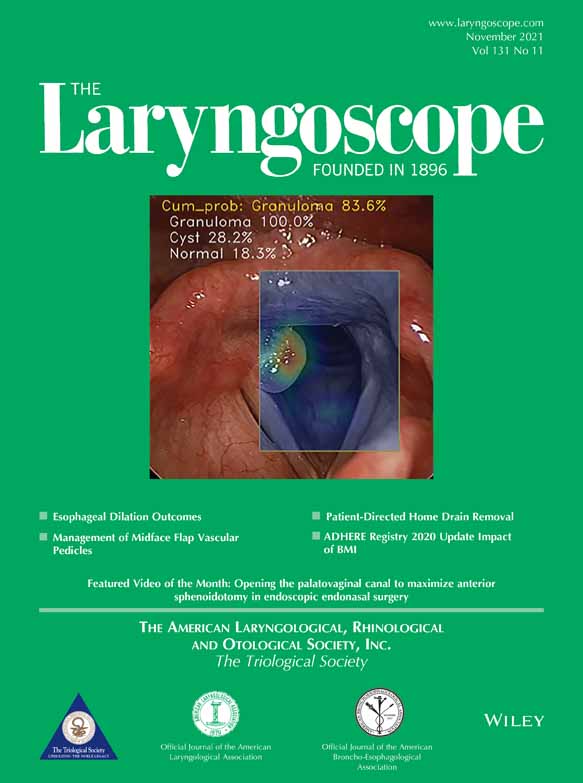Learning to Interpret Pediatric Vocal Fold Mobility: A Laryngeal Ultrasound Training Module
Editor's Note: This Manuscript was accepted for publication on April 13, 2021.
Podium presentation for the American Broncho-Esophagological Association (ABEA) at the Virtual Combined Otolaryngology Spring Meeting (COSM) on April 13, 2021.
The authors have no funding, financial relationships, or conflicts of interest to disclose.
Abstract
Objectives/Hypothesis
Vocal fold movement impairment (VFMI) in infants and children is most commonly evaluated by flexible nasolaryngoscopy (FNL). FNL in this population can be challenging due to movement, floppy supraglottic structures, or secretions. Laryngeal ultrasound (LUS) may be an alternative, less invasive means of evaluating VFMI that also decreases aerosolization during the COVID-19 pandemic. The primary objective was to examine LUS interpretation proficiency for VFMI via an educational module. A secondary outcome was to determine whether quantitative measurements increase interpretation accuracy.
Study Design
Prospective cohort trial.
Methods
Medical students, residents, fellows, faculty, and staff were recruited to complete the module, composed of a 13-minute teaching video followed by 20 cases. Participants determined both qualitatively (subjective assessment) and then quantitatively (through protractor measurements of the vocal fold to arytenoid angle) whether there was normal versus impaired vocal fold mobility.
Results
Thirty participants completed the LUS training module, and about one-third were otolaryngology residents. On average, each participant correctly identified 18 cases. The mean rank percent correct for quantitative measurements was significantly higher than that of qualitative interpretations (P < .0001). Measurements significantly caused participants to change their answer correctly compared to incorrectly (P < .0001). As the module progressed, there was no significant trend of more correct interpretations (P = .30). The sensitivity was higher for quantitative interpretations (89.0% vs. 87.3%) but specificity remained unchanged (92.6%).
Conclusion
Quantitative measurements may increase LUS interpretation accuracy. There was not a specific number of cases interpreted to achieve learning proficiency. LUS is an easily learned method to evaluate for VFMI across all training levels.
Level of Evidence
3 (local cohort study nonrandomized) Laryngoscope, 131:2545–2549, 2021




